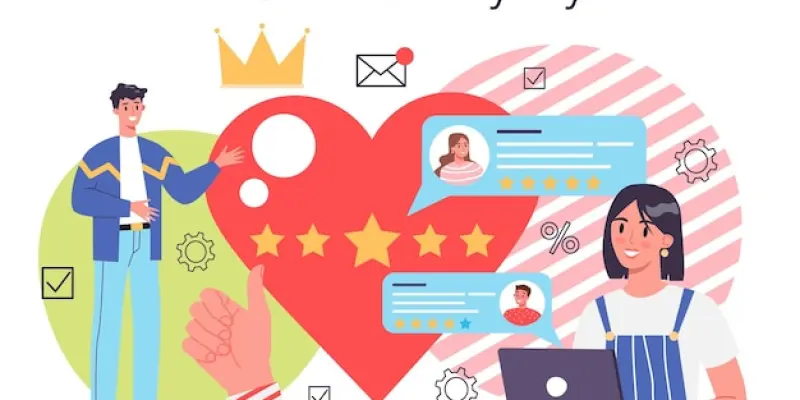In the ever-evolving B2B technology landscape, ensuring customer loyalty has become pivotal for success, especially within the SaaS-driven model. Businesses in this sector recognize that client retention and advocacy often prove as crucial as the acquisition of new clientele. Unlike past models, where perpetual licenses created predictable, lengthier renewal cycles, SaaS represents an environment where renewal times are shorter, creating an imperative for marketers to focus not only on securing new business but on maintaining robust relationships with existing customers. This article offers insights into strategies designed to effectively enhance customer loyalty, ensuring organizations can harness the full potential of this contemporary landscape.
The Necessity of Loyalty Beyond Acquisition
Many marketers encounter a notorious “after-sale blind spot,” focusing predominantly on acquiring fresh clientele while overlooking the critical need to nurture existing relationships. This blind spot merits significant attention as the SaaS model inherently demands a more dynamic approach to customer engagement, characterized by shorter renewal cycles. With the ease of software transitions and frequent budget concerns, customers are now in a position to reassess their SaaS tools regularly, often recurring annually or even more frequently. Unlike traditional models where commitment lasted three to four years, the flexible nature of SaaS necessitates an agile strategy focused on customer satisfaction to ensure continuity and loyalty.
The Brand Loyalty Loop
Developing a “brand loyalty loop” signifies an essential strategy in cultivating dedicated customers, ensuring that experiences and perceptions align seamlessly across the customer’s journey. This concept underscores the importance of engaging with all user levels, including daily operational users, who can often become vocal advocates within their organizations. As decision-making frequently includes input from these users, their advocacy can substantially mitigate churn and fortify retention efforts. By breaking traditional marketing silos and incorporating experiences and feedback from these users into unified messaging, businesses can harness a broader spectrum of influencers supporting customer loyalty, extending beyond top decision-makers to include a collective effort.
Redefining Marketing Metrics
In today’s competitive market, traditional marketing metrics centered on new leads and audience engagement fall short when considering the multifaceted nature of success in the SaaS domain. Metrics such as Net Revenue Retention (NRR) and Customer Lifetime Value (CLV) now come to the forefront, highlighting a shift towards retention- and loyalty-focused measurement. These metrics provide a clearer understanding of long-term customer value and satisfaction. Aligning marketing goals with these retention-focused metrics ensures strategic priorities resonate within the customer lifecycle, maintaining a balanced approach that welcomes consistent feedback from diverse organizational units, making marketing efforts more comprehensive and effective in sustaining growth.
The Evolution of Marketing Roles
As B2B marketers strive to meet the demands of an ever-changing landscape, an incessant push to highlight emerging trends can overshadow the essential role marketing plays in fostering ART: awareness, revenue, and trust. Although innovation and capturing new trends retain importance, this promotion must integrate seamlessly with onboarding, advocacy, and upsell efforts. In the cyclical nature of the SaaS customer journey, no definitive phases exist; rather, customer experiences flow continuously across various stages, demanding a strategy that reflects this ongoing cycling. Such an approach encourages customer engagement at every interaction point, creating an environment conducive to loyalty and long-term relationships.
Emphasizing Customer Obsession
In the current B2B tech landscape, success increasingly depends on cultivating a deep-rooted customer obsession that permeates all levels of an organization. Companies that prioritize customer-centric strategies often enjoy a substantial advantage in achieving revenue growth. Balancing immediate data-driven action with the long view of brand loyalty remains critical, ensuring that each engagement strengthens client bonds. This comprehensive focus on the customer’s journey enables firms to identify and address unique client needs proactively, building a foundation for robust relationships that facilitate sustainable growth and contributing to a long-lasting competitive edge within the SaaS environment.
Actionable Strategies for Marketers
A crucial strategy for B2B marketers is the alignment of goals and metrics, streamlining efforts to incorporate retention-focused benchmarks into broader marketing strategies. Engaging executive stakeholders in discussions around crucial metrics such as NRR and CLV embeds customer-focused goals across all levels of planning. Simultaneously, prioritizing the impact of first impressions on customer relationships underlines this entire approach. Enhanced post-purchase experiences can facilitate Customer Lifetime Value expansion, serving as a catalyst for potential advocacy. Mapping communications throughout the customer journey solidifies seamless onboarding experiences, setting the stage for future customer involvement and positive advocacy within every organization segment.
Cultivating Customer Advocacy
In the rapidly shifting realm of B2B technology, maintaining customer loyalty has become essential for success, particularly within the SaaS-driven model. Businesses in the sector understand that retaining clients and fostering their advocacy can be as significant as acquiring new ones. In contrast to earlier systems where perpetual licenses led to predictable and extended renewal cycles, SaaS introduces shorter renewal intervals, presenting a pressing need for marketers to prioritize not only the pursuit of new business but also the nurturing of strong bonds with current clientele. This contemporary landscape demands strategic approaches to boost customer loyalty. Marketers must refine their strategies to not only secure new clients but also to retain existing ones, ensuring they fully leverage the potential within the modern SaaS environment. By focusing on relationship management and client satisfaction, businesses can effectively navigate this swiftly evolving sector and sustain their success over time.

